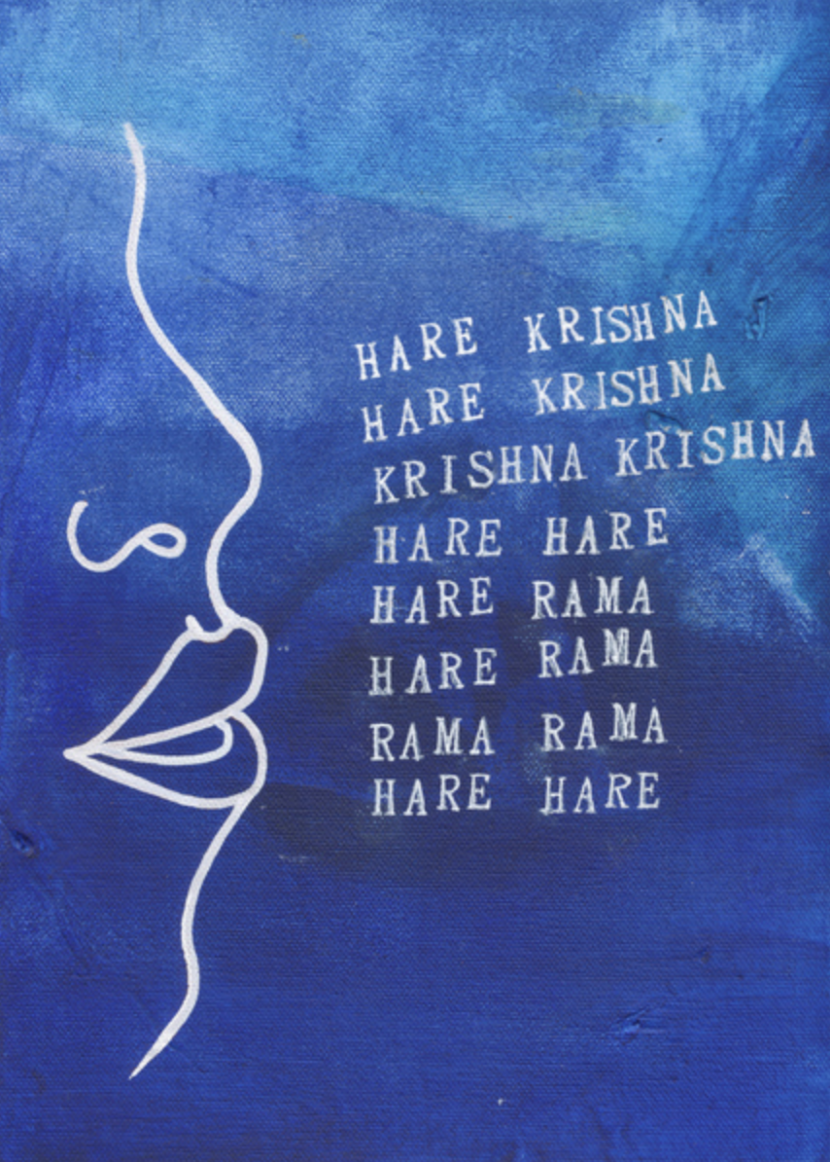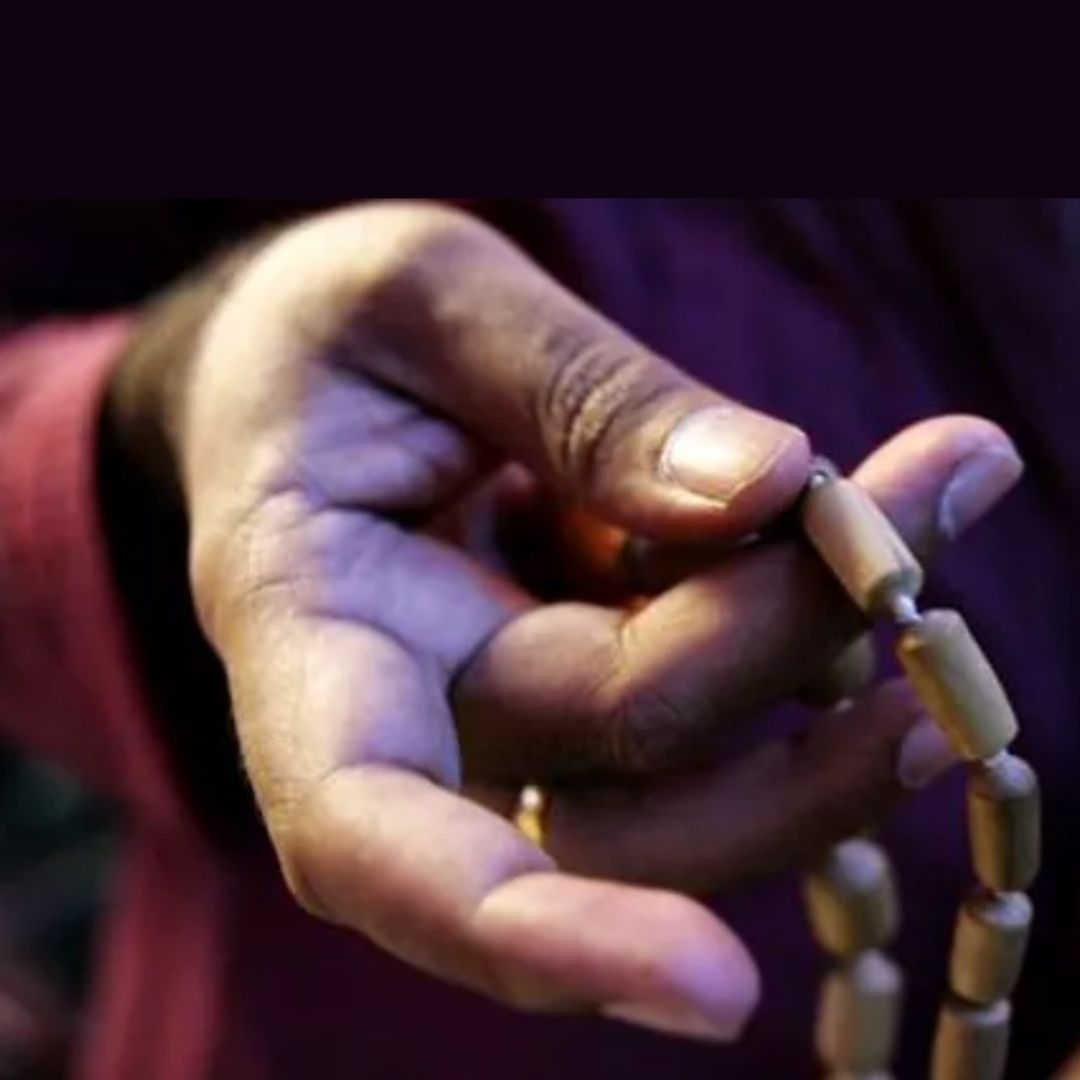“If one chants the holy name, even in a helpless condition or without desiring to do so, all of one’s sinful reactions immediately depart, just as a lion’s roar causes the small animals in the forest to flee in fear.” -Garuḍa Purāṇa
A mantra is a combination of syllables that creates a transformational sound vibration. The Supreme has created this world in such a way that certain elements are transformable. For instance, iron can become fire, but dirt can’t become fire–it doesn’t transform. Certain material elements can even be transformed into spiritual elements. Sound is the most transformable element, and it can then transform us.
Mantras have special powers, because when surcharged with spiritual energy, they become absolute. As mentioned by the great Bhakti master Rūpa Gosvāmī, there are vaca and vasaka, or the object and the expression of the object. In a spiritual mantra, there’s no difference between the object and the expression of the object. As Prabhupāda used to say, you can chant “Water, water, water,” but that doesn’t mean you’re going to quench your thirst, nor are you going to bathe yourself and get clean. However, if you chant a mantra with sacred names of God, you will have union with the divine, all your desires will be fulfilled, and you’ll become enlightened, because it’s absolute. As Professor Edwin Bryant says, “mantra is not just a prop.”
Here I will recommend three specific mantras to focus on that will help develop your spiritual practice: Oṁ, Nitāi-Gaurāṅga, and the Hare Kṛṣṇa mahā-mantra.
Oṁ is a single-syllable mantra that synchronizes all of our spiritual energies in the heart region. It is one of the most famous mantras, dating back to the oldest book in the world, the Ṛg Veda. As Prabhupāda explains in his Teachings of Lord Caitanya (31), “This oṁ is composed of three letters – A, U and M – and it describes our relationship with the Supreme Lord, our activities by which we can achieve the highest perfection of love and the actual position of love on the spiritual platform.”
Nitāi-Gaurāṅga is a mantra that invokes the avatāras Nitāi and Gaurāṅga, who instill love and compassion for all living beings in our hearts. It also removes all obstacles in our spiritual paths. An avatāra refers to a personality who deliberately comes from a higher dimension to a lower dimension to help those of us stranded down below. Without intervention from somebody operating at a higher level, we cannot ascend. Therefore, we need an avatāra to pull us upward. This mantra is synonymous with the avatāras themselves.
Avatāra has become a popular term these days. People use the concept in different contexts, but it originally comes from the ancient Vedic literatures and means, “One who descends.” There are beings who can descend to help us. These great spiritual personalities are powerful and special, as they bring a vibration from a higher realm to a realm of lower vibration. They communicate the higher vibration, and that’s what transforms us.
The Hare Kṛṣṇa mahā-mantra is called “The great mantra for deliverance,” because it ushers in the highest pleasure. It summons the most powerful energy from the highest region of the spiritual world and fills our hearts with spiritual happiness. It also instills a desire to lovingly serve. It goes like this:
Hare Kṛṣṇa, Hare Kṛṣṇa, Kṛṣṇa Kṛṣṇa, Hare Hare/ Hare Rāma, Hare Rāma, Rāma Rāma, Hare Hare
My teacher, Prabhupāda, comments in his purport of Śrīmad-Bhāgavatam 2.1.12, “Since no one is more powerful than or equal to the energy of the Supreme Lord, no one’s name can be as powerful as that of the Lord. By chanting the Lord’s holy name, one can derive all the stipulated energy synchronized from all sources.”

Want more wisdom from Vaisesika Dasa? Sign up for his newsletter here!
2
